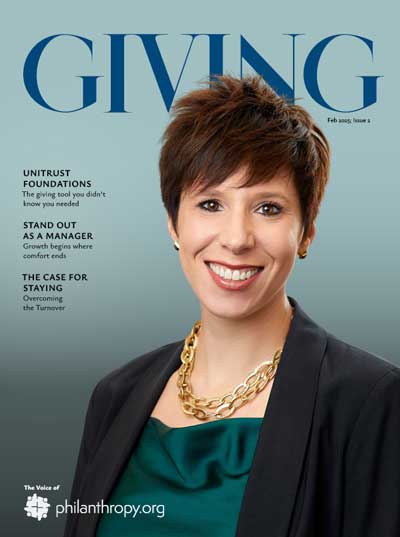On average, 88% of a nonprofit’s revenue comes from the top 12% of its donors. If you didn’t know it already, this stat shows how crucial major gifts are to an organization’s overall fundraising strategy. Additionally, major donors not only provide nonprofits with sustained financial security but are often co-creators of many programs and initiatives.
It’s critical to track a variety of major gift metrics to monitor the success of your fundraising strategy and promote overall financial health. This article will teach you how to calculate five essential metrics for evaluating the success of your major gift fundraising.
Why are Major Gift Metrics Important?
Individual major donors require a high-touch fundraising approach which entails rigorous acknowledgment, recognition, and reporting efforts. Similarly, nonprofits should take a high-touch approach in analyzing major donors as a group.
Tracking major gift metrics allows you to stay updated on any changes and trends in your major gift strategy. For example, by measuring a few metrics, you’ll be able to know if you’re losing more donors than you’re acquiring or relying too heavily on your major donors. Additionally, with major donor metrics, you can evaluate the success of your major gift officers.
Five Major Gift Metrics to Track
You can analyze major giving any number of ways. You can analyze major giving by studying different interactions like donor acquisitions, donations, or appeals. You can also evaluate major giving by focussing on different populations like your entire major donor base, individual donors, or even your gift officers.
However you decide to evaluate your major giving, make sure you pay attention to different interaction types and populations. Keeping that in mind, below are five different major gift metrics that will help you track the performance of your overall fundraising strategy.
1) Major Donor Acquisition Rate
No matter how strong your retention strategy is, you will lose a few donors every year. Because of this reality, you will need to continuously attract new donors and keep track of your Donor Acquisition Rate.
This is especially true for major donors as they are a small population of your stakeholders. Therefore, fundraisers need to invest resources into monitoring this population’s growth to understand whether your acquisition strategies are successful. Most organizations can’t afford not to know if their major donor acquisition rate is dropping.
Major Donor Acquisition Rate tells you the percentage of your total donors first acquired in a given period. To calculate Major Donor Acquisition Rate, use this equation:
(# of First Time Major Donors This Year ÷ Total # of Major Donors) x 100 = Major Donor Acquisition Rate
While there is no definitive benchmark for this metric, your acquisition rate needs to at least make up for your donor churn rate.
2) Major Donor Churn Rate
Donors will inevitably leave every year. In other words, these donors have “churned”, and Donor Churn Rate calculates the percentage of donors who have not given to your organization again for more than a year. Churn rate is the inverse of donor retention, so the fewer donors that churn, the more you retain.
Additionally, Major Donor Churn Rate is important to measure because it’s typically much lower than your overall churn rate. For example, Fundraising Report Card found that, on average, 37% of donors who give over $5000 a year are retained. However, only 18% of donors who give under $100 are retained.
To calculate Major Donor Churn Rate, use this equation:
(Lost Major Donors From Last Year ÷ Last Year’s Total Major Donors) x 100 = Major Donor Churn Rate
Major Donor Churn Rate is a great measure of how effective your high-touch stewardship activities are. If your churn rate is high, you may need to tailor your stewardship to keep donors more engaged.
3) Major Donor Dependency Rate
Many organizations rely heavily on their major donors, but if you rely too heavily on too few donors, you may find yourself in a tricky situation when one decides to stop giving. This is why it’s important to track how reliant you are on your biggest supporters and diversify your fundraising efforts when appropriate.
The Pareto Principle, a popular concept applicable to fundraising, states that 80% of your organizational revenue is likely to come from 20% of your donors if you’re securing major gifts and bequests properly. While every organization will have a different number of major donors, this principle can be used as a benchmark for success.
To calculate your Major Donor Dependency Rate and determine how you compare to the Pareto Principle, you first need to sort your donors’ total contributions for a given period from highest to lowest.
Here’s a range of total annual donation amounts from a hypothetical group of donors:
$10, $15, $18, $26, $51, $61, $68, $72, $90, $101, $120, $154, $159, $168, $201, $217, $832, $1,645, $1,958, $2,379.
Second, add up the total value of the contributions. The total amount of the above range is $8,345. Third, calculate what 80% of your total donations would be. In this example, 80% of 8,345 is 6,676.
Fourth, starting with the highest total donation amount, add up the contributions in descending order until you get a value equal to or just greater than 80% of your total donations. The sum of these amounts will identify the donors responsible for the majority of your revenue.
In this example, your top four donors’ total donation amounts ($2,379, $1,958, $1,645, $832) add up to $6,814, an amount just greater than 80% ($6,676) of the total value of the donations.
Fifth, calculate the percentage of donors who donated equal to or greater than 80% of your total donations. Then, simply divide the number of your top donors by the total number of donors. In this case, the top four selected donors represent 20% of the total 20 donors.
Last, because the amount given by the top four donors ($6,814) is slightly higher than 80% ($6,676) of total donations, you have to find the exact percentage of donations given by these donors. To calculate this, divide your top donors’ donation total ($6,814) by the total donation amount ($8,345). In this case, the top donors’ contributions equal 81.65% of the total amount.
After all that, we know that the theoretical organization is dependent on 20% of its donors to provide 81.65% of its total donation amount. This finding aligns nicely with the Pareto Principle and means the hypothetical organization is likely focusing enough attention on major gifts and bequests relative to other appeals.
4) Average Major Donor Lifespan
Major gifts tend to be given for specific campaigns or programs that align with a donor’s goals or values. This means that the amount a donor gives and how many gifts they make are typically based on the needs of a particular initiative. So, tracking Average Donation Amount and Gift Frequency isn’t always representative of your organization’s ability to engage and reengage major donors.
However, tracking a major donor’s desire to give over multiple years, and thus multiple projects, will give you a clearer understanding of your team’s ability to renew donor interest in different initiatives over time.
Additionally, by tracking your Average Major Donor Lifespan, you can understand how effective your cultivation and stewardship methods are at extending the amount of time a major donor engages with your organization.
Here’s the formula for Average Major Donor Lifespan:
(Total Donor Contribution Years ÷ Total Major Donors) = Average Donor Lifespan
Be careful only to include years in which major donors actively gave. You’ll accidentally inflate your result by including years when a donor was lapsed.
5) Major Gift Officer Evaluation
At the heart of your fundraising strategy is your major gift officers. They are the people who will increase your donor acquisition rate, prevent donor churn, and develop meaningful relationships with your most impactful donors.
You can measure the performance of major gift officers using a few different metrics that analyze their interactions and transactions of their donors:
- Average Donation Amount
- Average Gift Frequency
- Average Donor Lifetime Value
- Average Gift Increase
- Donor Meetings Per Month
- Donor Calls Per Month
- Appeals Per Month
- Prospect Discovery Calls Success Ratio
Knowing these metrics will help you understand the impact that major gift officers are able to derive from their connections.
However, a more nuanced way of assessing gift officer performance is by evaluating their moves management. A moves management approach to fundraising involves guiding donors towards their next donation with acknowledgment, recognition, and reporting efforts, or “moves”. By studying these moves, you can track how major gift offices are progressing towards the benchmarks or goals that you have set out.
Major donors keep many nonprofits afloat, so tracking these key metrics will help you to stay on top of your financial and organizational health. Remember, these are just five of the many metrics you can use to track major gifts. Which metrics do you use at your organization? Let us know in the comment section.
Categories: Major Gifts, Planned Giving Marketing



